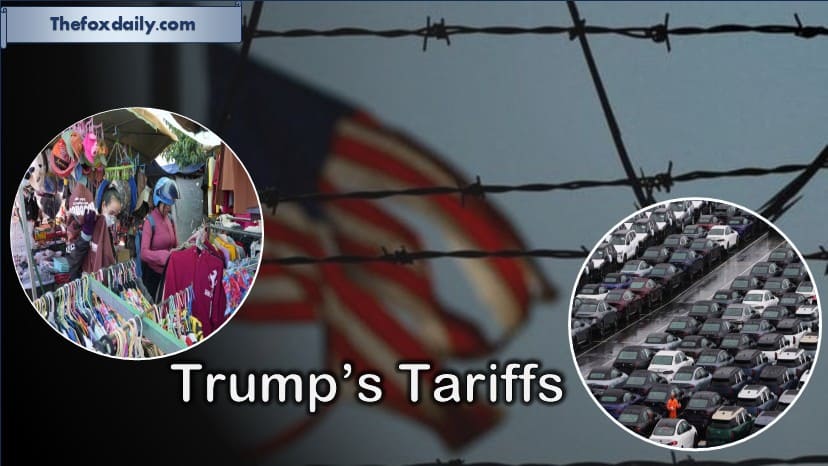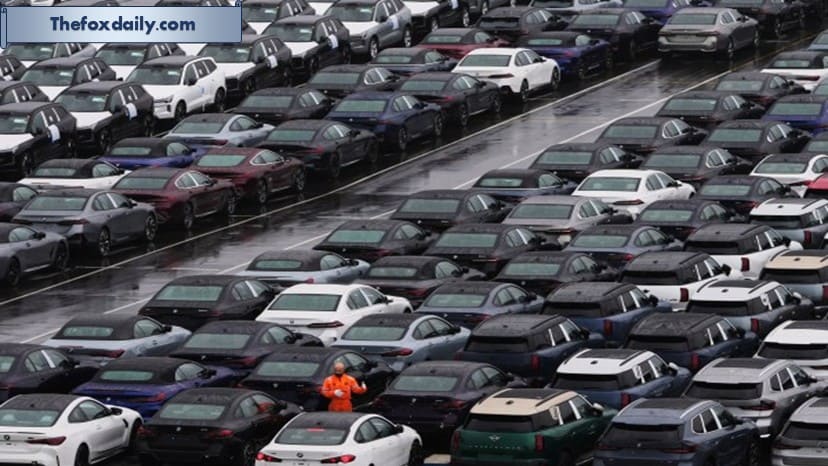
US President Donald Trump proposed wide new tariffs in April that importers will have to pay to bring in goods from overseas. Since then, the top tariff rates have been lowered by some of America’s main trading partners, such as the UK, Japan, and now the European Union. The EU’s agreement has cut in half the 30 per cent tariff Trump had threatened.
However, rates are still greater in other nations, such as Canada. In Canada, duties increased to 35% after the deadline of August 1.
According to Trump, the additional tariffs will bring in billions of dollars and encourage businesses to produce in the US. The American Fuel and Petrochemical Manufacturers states that “many refineries require heavier crude oil to maximize flexibility of gasoline, diesel, and jet fuel production.”
Economists caution that the full effects may not yet be felt, despite early indications that the tariffs are already raising prices for American consumers.
What is becoming more costly?
Clothes and shoes
The majority of apparel and shoes that are sold in the United States are manufactured elsewhere, in nations like Bangladesh, China, and Vietnam. Taxes on imports from those nations are still very high, even though Trump pulled off from the highest duties he first suggested. The US is now charging at least 30 per cent on goods from China, and plans to collect 19–20 per cent on imports from Vietnam, Bangladesh, and Indonesia.
Major retailers like Walmart and Target, as well as brands like Levi Strauss and Nike, are under pressure with some already warning of price hikes.

From May to June, clothing prices increased by 0.4% after months of decreases. The BBC cited the Yale Budget Lab as saying that short-term price increases for apparel might reach 37%.
Food: coffee, olive oil, and other items could become more expensive
The United States imports almost all of its coffee. Vietnamese coffee may be subject to a 20% tariff, whereas Brazilian coffee is subject to 50% duties. The EU deal includes 15 per cent tariffs on products like olive oil from Italy, Spain, and Greece.
Trump increased tariffs on Mexico, a significant supplier of avocados and tomatoes, in the meantime. The Yale Budget Lab predicts that food costs would increase 3.4% in the near future, with fresh produce being the most affected, even if some products have been exempt.
Alcohol
Brands like Pernod Ricard and LVMH are among the approximately €9 billion worth of alcohol that European businesses sell to the US annually. A third of Ireland’s whiskey exports and almost 18% of its champagne exports come from Europe. The European Commission hasn’t confirmed whether alcohol is included in the recent tariff agreement or exempted with other food items.
In the meantime, the price of canned beer is anticipated to increase due to tariffs on Mexican aluminum. The Beer Institute estimates that 64% of beer in the US is served in cans.
Automobiles
Trump announced a 25% tax on imported passenger cars and auto parts in March, claiming it would “protect America’s automobile industry.” Since then, it has been reduced to 10% for vehicles in the UK and 15% for those in the EU and Japan.

The cost of cars hasn’t increased much thus far. Companies are “absorbing more of the burden [from tariffs] and not passing the added costs to consumers,” according to Erin Keating, executive analyst at Cox Automotive. That might not last, though. Since many of the cars that US businesses sell are put together in Canada or Mexico, they are also now liable for the taxes.
Homes
Building expenses have already increased due to steel and aluminum tariffs. Now that copper is subject to a 50% tax, lumber might follow. As reported by the BBC, the National Association of Home Builders stated that consumers ultimately bear the cost of the tariffs through increased home costs.
A Canadian Chamber of Commerce report noted that the US gets 69 per cent of its lumber, 25 per cent of its imported iron and steel, and 18 per cent of copper from Canada, all now vulnerable to US tariffs.
Fuel and energy
Ursula von der Leyen, president of the European Commission, stated that the US-EU agreement will help “replace Russian gas and oil” by increasing Europe’s imports of American LNG, oil, and nuclear energy.
But US consumers may not benefit. While oil and gas imports are largely exempt from tariffs, Trump placed a 10 per cent levy on energy exports from Canada, America’s top foreign supplier of crude oil. Between January and November 2024, 61 per cent of US oil imports came from Canada.
Although the US has plenty of oil, its refineries are designed to handle heavier crude, which is primarily imported from Canada. Fuel prices may rise if Canada responds by cutting exports.
For breaking news and live news updates, like us on Facebook or follow us on Twitter and Instagram. Read more on Latest World on thefoxdaily.com.






COMMENTS 0